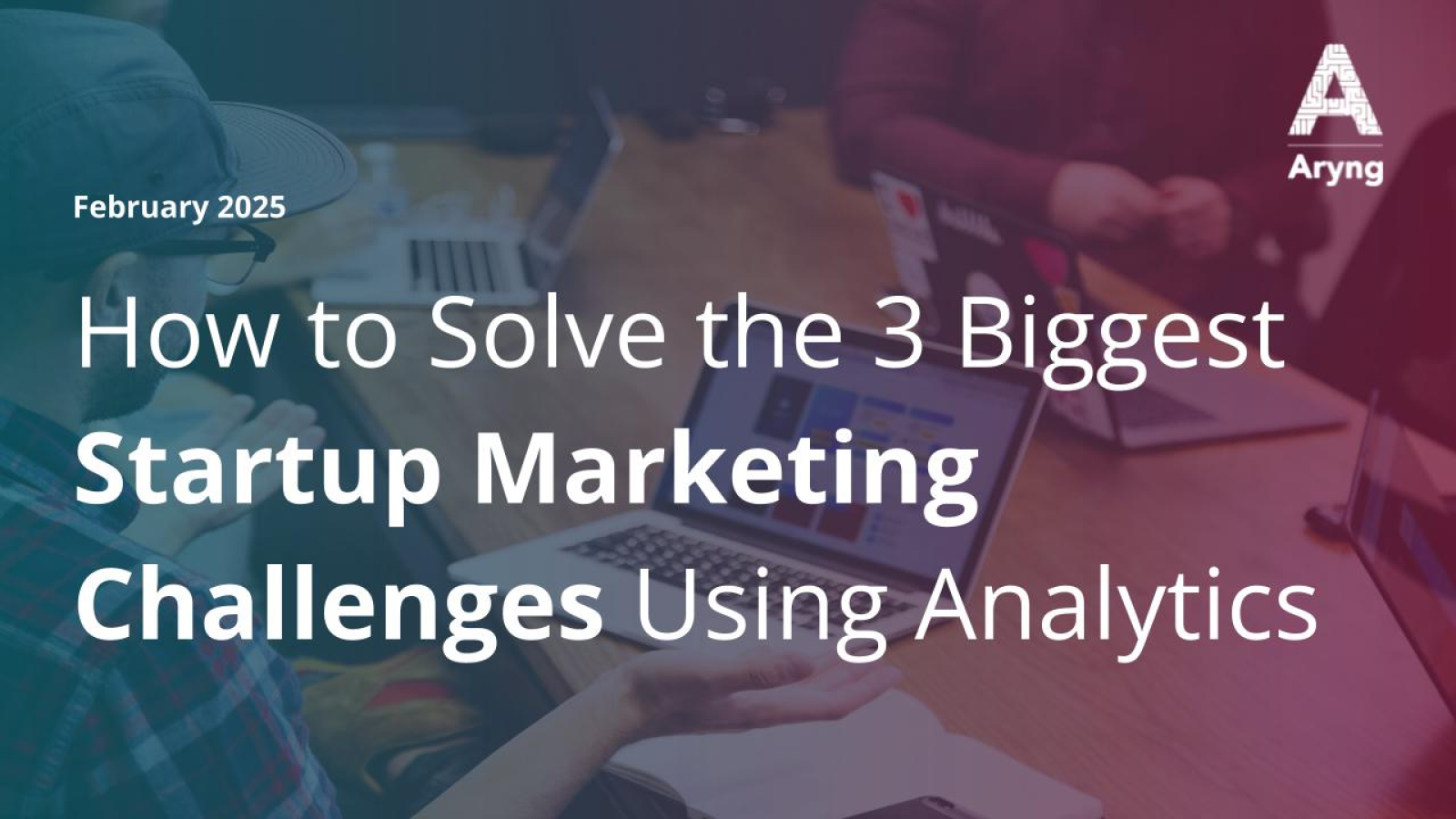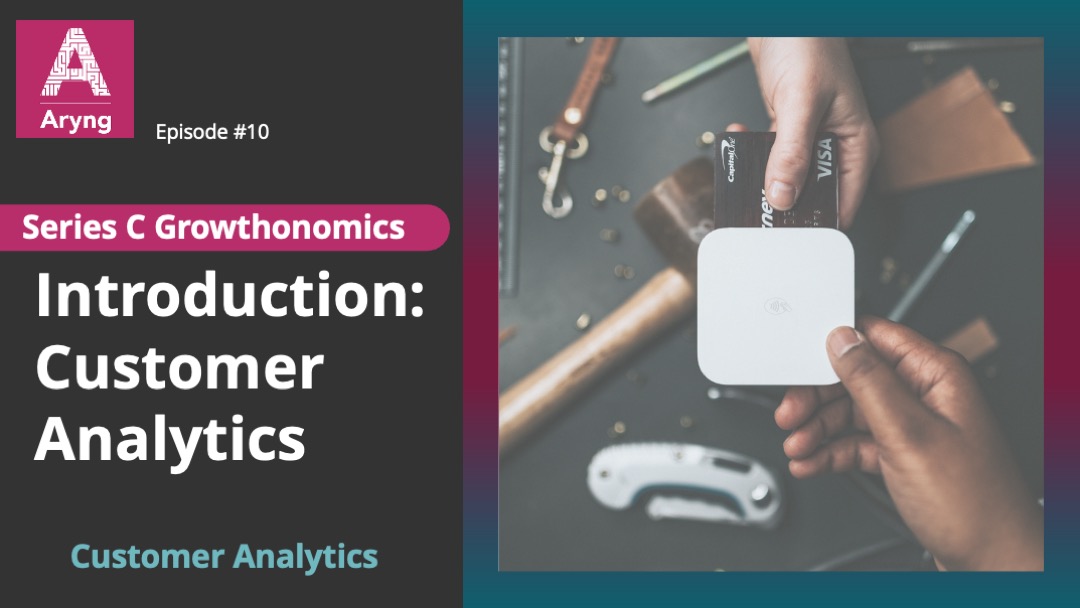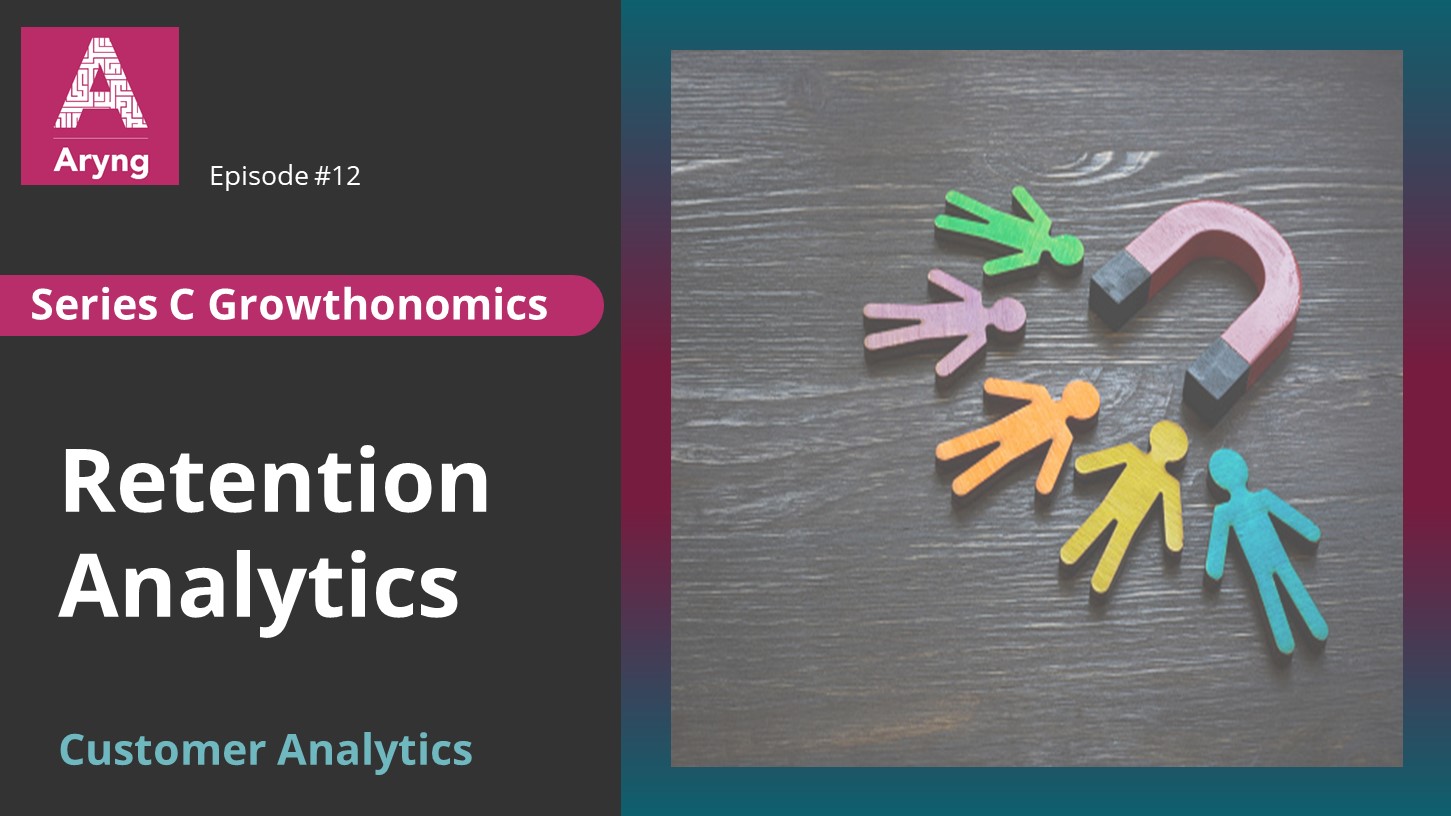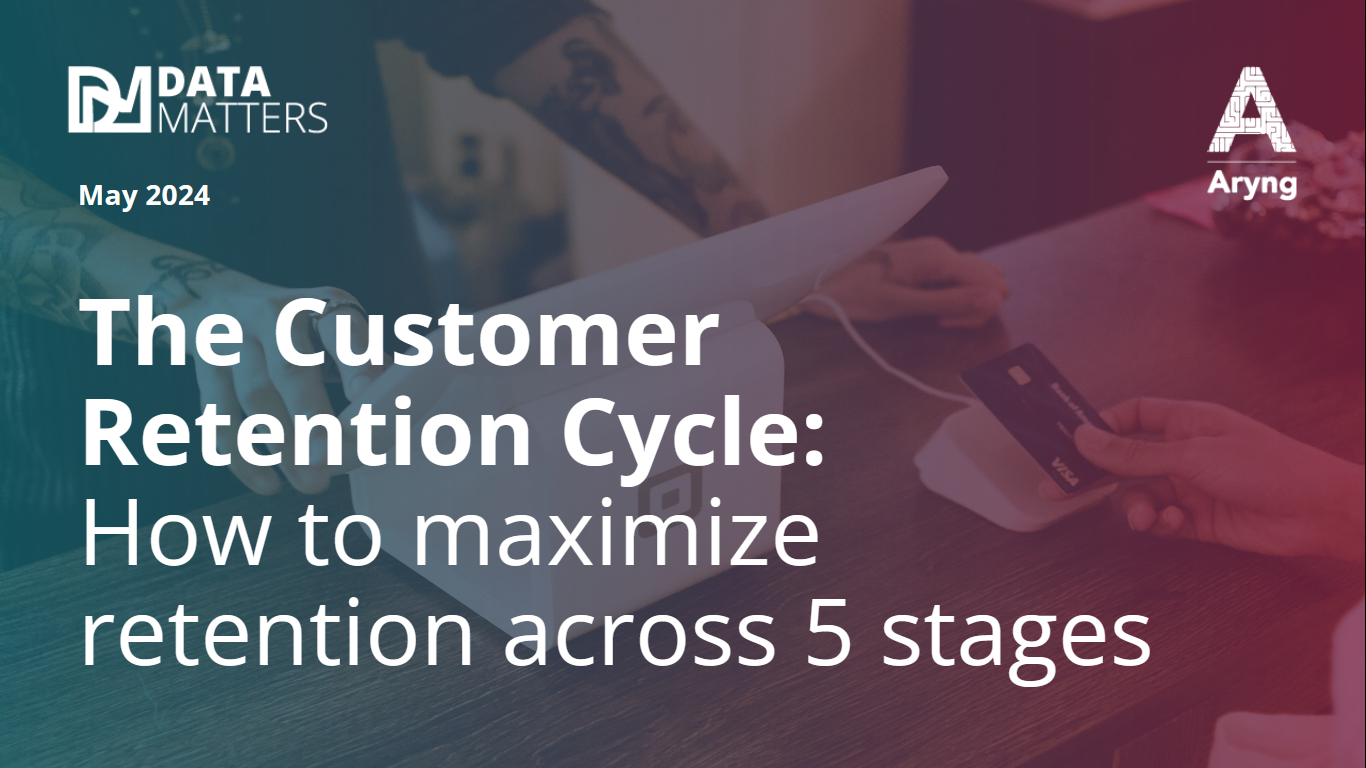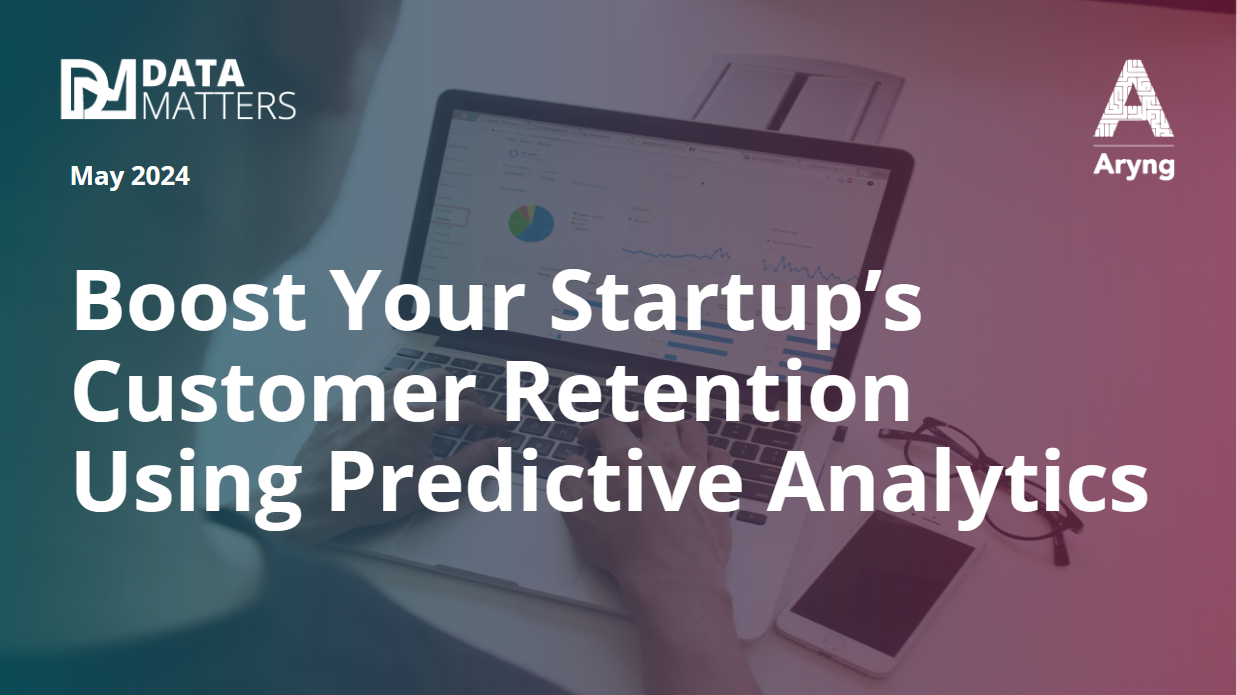When it comes to startup marketing, there’s limited resources, mounting pressure from investors, and a million channels to choose from.
It’s no wonder startup founders and executives lose sleep over these top 3 startup marketing challenges:
- High CAC: “Why is our marketing spend so ridiculously high?”
- Low revenue: “Why aren’t we getting more conversions?”
- Low retention: “Why won’t our old customers come back?”
The good news is that the strategies to solve these marketing challenges exist.
But you won’t find them in long blog articles about ‘improving your offer’ and ‘target personas’…
You’ll find these strategies only in your data.
Common Startup Marketing Challenges and Strategies to Overcome them
With the right data-driven startup marketing strategies, you can tackle your biggest challenges head-on and stop wasting time (and money) on tactics that don’t work.
Here are 3 common startup marketing challenges and how data analytics helps solve them, using real case studies to show you how it’s done.
1. How to Reduce Customer Acquisition Costs (CAC)
How much are you spending to acquire each new customer? If your answer makes your heart sink, you’re not alone. High CAC is a classic startup problem.
The thing is, not all marketing channels are created equal. Some are expensive black holes. Others are golden tickets.
The trick is figuring out which is which, for you.
Case: Modifying the Marketing Mix to Create $1.2M in Opportunities
A software company we worked with wanted to optimize their marketing spend.
They were using many marketing tactics, either alone or in combination, toward closing sales. They wanted to know which combination of tactics would be most efficient. Without this insight, budget allocation lacked focus, potentially inflating costs without delivering proportional returns.
Observe here that the real business question was not a vague and general “How to reduce CAC?”.
Instead, it was a precise and actionable problem statement – “What marketing tactics work better toward closing sales?” This is the first step to coming up with real data-driven low-CAC marketing strategies.
This was a textbook example of how a well-defined problem can drive actionable data insights.
- We started with the metric that mattered: win rate, defined as the ratio of total deals won to total deals closed. This provided a direct and meaningful indicator of the effectiveness of various tactics and their combinations.
- Then we drilled down into personas, account categories, deal stages, and deal sizes. This granular analysis helped us uncover unique patterns.
- Using advanced analytics, including correlation analysis and decision trees, we explored the relationships between marketing tactics and outcomes.
The analysis revealed a key insight: free marketing tactics were more effective at closing deals than paid tactics. Specifically, a combination of product trial deployment, organic search and direct leads worked best.
Conversely, paid tactics were less effective, especially for acquiring and closing new business.
So based on the findings, we made these suggestions:
- Reduce spending on paid tactics for acquiring new business. They just weren’t delivering.
- Focus resources on nurturing organic search and direct leads, particularly by moving them toward trial deployment, a proven driver of deal closures.
- Develop a targeted follow-up process for organic search and direct leads to guide them seamlessly toward trial deployment and eventual closure.
By implementing these data-driven recommendations, the company achieved a million-dollar impact at a reduced CAC and better ROI.
Takeaways for Startup Executives:
Notice how the marketing strategies that actually worked for the client did not come from expert articles or so-called “startup marketing best practices”. Instead, they emerged from a deep understanding of the client’s own data.
Your best low-CAC marketing strategies are hiding. To uncover them, some tips to keep in mind are:
- Start with the Right Question: Defining a clear problem statement—like “What marketing tactics work better toward closing sales?”—is critical for actionable insights. Avoid broad, unstructured questions that can dilute focus.
- Use Meaningful Metrics: Identify metrics that directly connect with business outcomes. In this case, the win rate offered a clear measure of marketing effectiveness.
- Don’t Assume Paid > Free: Free tactics, when strategically leveraged, can outperform paid campaigns in terms of both effectiveness and efficiency.
2. How to Increase Revenue in Startups
Every startup faces the challenge of turning leads into paying customers. Even with a steady stream of inbound leads, many startups struggle to convert them at a high enough rate.
Case: Drove $35M by Quadrupling a Tech Company’s Marketable Universe
A software company came to us with a clear challenge: they needed to unlock new revenue sources for their second-most popular product, Product X. They had been marketing it to users of earlier versions of the product and trial downloaders.
But what if there was a larger pool of untapped prospects that could be converted into paying customers?
Instead of sticking with traditional lead generation methods, we dug into their data to find hidden opportunities. Our approach wasn’t about tweaking ad copy or adjusting targeting, it was about rethinking the prospect base entirely.
- We dove into the company’s massive database of 50 million prospects (people who had downloaded one of their other products) and used logistic regression to sift through the noise.
- We used the historical data of users who had already adopted Product X, looking for patterns and similarities.
- Next, we gave each prospect an adoption probability score, essentially ranking how closely they resembled past users of Product X.
This way, we expanded the company’s marketable universe, finding new prospects with a high likelihood of jumping on board. The company then sent tailored offers to the top 4 million prospects based on their likelihood to purchase.
- This led to $35 million in incremental revenue.
- And the new prospect set became a source of incremental revenue for all future releases of Product X.
Takeaways for Startup Executives:
This case proves that boosting revenue isn’t just about tweaking your sales funnel or fine-tuning your lead nurturing strategy. It’s about finding opportunities that traditional methods simply can’t spot, and increasing revenue in ways that would have remained hidden without a data-driven approach.
- Allow Room for Creativity: Combine creativity with analytics to uncover unexpected, high-impact startup marketing strategies that boost revenue for your startup.
- Implement Scalable Models: Use the right models to find marketing strategies that work well now and stay effective over time.
- Focus on What Matters: Instead of getting bogged down by generic profiling, prioritize metrics and behaviors that actually predict conversion.
3. How to Improve Retention in Startups
Keeping customers is just as hard, if not harder, than getting them in the first place. After all, they’ve already given you their time and money.
Yet, many startups overlook that retaining existing customers often drives growth more effectively than endlessly chasing new ones. That’s where data analytics comes in to make a big impact.
Case: Generated $20M by Marketing Optimization for a Financial Services Company
A significant chunk of a credit card company’s customers had been inactive for over a year. Traditional tactics like lowering the APR or boosting credit line offers barely moved the needle.
They needed to figure out how to reactivate these dormant customers and make them profitable again.
Here’s how we approached it:
- We started by building regression and classification models. The first model identified customers most likely to reactivate, while the second uncovered key profit drivers like revenue and costs.
- We used decision trees to identify the optimal offer for each customer segment, zeroing in on maximizing expected profits. After scoring the database, we targeted the top 30% of customers with personalized offers.
- Next, we worked with the marketing team to create custom offers for each group, using decision trees to find the best offer based on their behavior and potential profitability.
By focusing on the top segments and offering them personalized deals, the company managed to reactivate many inactive customers, leading to a $20M+ boost in lifetime customer revenue.
Takeaways for Startup Executives:
Data-driven startup marketing optimization can reignite customer engagement and create significant revenue opportunities. When it comes to improving retention:
- Understand Customer Segments: Without guesswork, identify which segments of your customer base are most likely to engage again. Don’t treat them all the same.
- Predictive Models Aren’t Just for Acquisition: You don’t always need to find new customers. Sometimes, the best source of growth is in re-engaging your existing ones.
Unlock Startup Marketing Strategies that Work for You
Marketing challenges can feel insurmountable – whether it’s high customer acquisition costs, low conversion rates, or poor customer retention. However, as we’ve seen through these three case studies, data analytics offers an invaluable solution to these problems. By leveraging data-driven insights, startups can optimize their marketing strategies, maximize profitability, and achieve sustainable growth.
From reducing CAC by identifying the most efficient marketing tactics, to increasing conversion rates through targeted prospecting, to boosting retention by reactivating dormant customers with personalized offers, data analytics empowers startups to make smarter decisions and drive real results.
So stop making marketing decisions based on guesswork or generic best practices.
Your data holds the answers.

